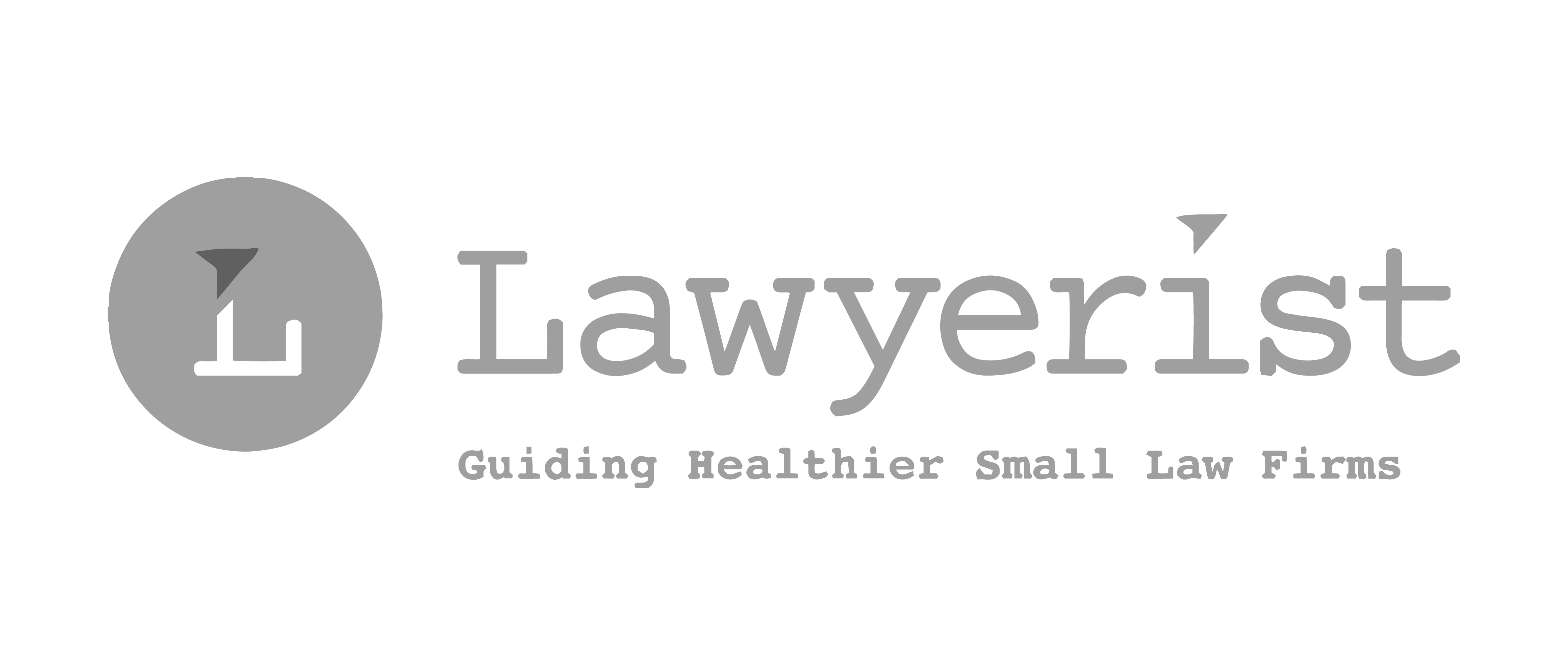How to Build More Time for Your Clients into Your Day

Every firm has an idea of how they want their client experience to feel: convenient, efficient, and personalized—the things that will retain clients in the long term (and ultimately result in more referrals).
But it’s one thing to know how and why you want to prioritize your clients, and another to find time in the day to actually make it happen. If you find yourself spending more time on administrative tasks than on nurturing client relationships, it may be time to test out the “lean” business methodology.
What is “lean” law methodology?
Lean management is about finding ways to make redundant processes more efficient, so you can build a more productive team. By using this methodology, law firms can open up more time in their day to prioritize their clients and provide an exceptional client experience.
Rest assured: lean management is not some scary overlord tactic to squeeze more productivity out of an already maxed-out team. Instead, it’s about figuring out how to optimize workloads to spend more time on the things that matter.
How does it work?
At its core, a lean legal firm is one that maximizes value and minimizes waste. But how does that happen?
The transformation into a lean law firm doesn’t happen overnight. Just like all sustainable changes, it takes time to execute and build into an operational habit.
The best way to see where you need to change? Conduct a review or audit of your current business practices.
Once you’ve made a comprehensive list, evaluate each process, asking yourself:
- What steps are involved?
- How many billable hours does it require?
- What is the value of the task?
- How does the task impact client experience and satisfaction?
- Is this task routinely completed on time or does it fall behind schedule?
- Who does this job? Are they best suited to handle this task?
The overarching goal here is to identify what are the tasks that you need to do, but don’t have the time to do (or time to do well). What are the things getting in the way?
Common culprits for law firms include activities like:
- Document creation and assembly
- Billing and invoicing
- Time and expense tracking
- File-sharing hurdles and signatures
- Data entry
Add disorganized filing systems and unaligned internal priorities to the mix, and it’s no wonder that client relationships are getting put on the back burner.
Four ways to streamline your law firm’s workflows
All of the above issues and processes can be improved by applying the principles of lean management through legal practice management software. Legal practice management software can automate and optimize administrative tasks to reduce wasted time and bottlenecks.
With the right tools, you can spend less time accomplishing the same task and have more time to prioritize your clients. Here’s how you can streamline your law firm with lean principles.
1. Automate document assembly
Raise your hand if you have been personally victimized by a “copy and paste” document assembly gone wrong.
Many firms save time on document assembly by pulling from old files… that were tailored to a past client. To update the document, team members have to catch every past customization, update it on a new file, and manually add in the new client’s information.
Instead of spending all of that time on data entry and updates, look for a legal practice management tool that offers document automation. With document automation, teams can build customizable templates that automatically populate fields from client information already stored within the system.
As a result, team members can quickly create new documents without reinventing the wheel, and rest assured that the populated client data matches what you have in your system.
2. Move away from manual time tracking
Tracking billable hours is a key administrative task in any legal practice—but manual time-tracking can actually cost firms money.
That’s because:
- Sticky notes are not the most efficient way to track time.
- Waiting until the end of the day to track your time can actually cost you money (in fact, it can actually cost a lawyer 10% of their billable time).
- Manual time tracking creates more work when it comes to drafting invoices and reviewing each client’s billable hours.
On the other hand, automated time trackers can help you log your time as you work. Switch between clients, pause for breaks, and easily integrate to add your time automatically to different clients’ invoices.
In practice, this means that instead of constantly trying to account for your time and laboriously creating invoices each month, you’ll have already tracked your time and only need to worry about conducting a final review of invoices each month to ensure accuracy.
3. Batch invoices and online payments
Manual billing and collections add an enormous amount of time-consuming work to any legal practice. But with the right tools, many repetitive processes can be automated or made more efficient.
Instead of manually creating and mailing hard copies of bills each month, a legal practice management software enables firms to save time by:
- Scheduling automatic prebills
- Batch invoice processing
- Automated invoicing for recurring retainers
- Online credit card payments
- Three-way reconciliation for trust accounting
- Advanced reports
These tools not only save significant time on firm accounting each month, but they also provide an improved client experience when it comes to your service fees. The easier it is to pay a bill, the more likely your client is to pay on time—without the requisite awkward conversations and collections reminders.
Tools like automated payments and secure online payment portals make it easy for clients to pay on time. This in turn lets you focus on your clients’ needs, rather than your firm’s liquidity.
4. Adopt an organized, centralized case management system
There are few things worse than realizing that someone at your company saved a critical document on their personal desktop… and they’re on vacation for the next week.
When it comes to efficient case management, the best systems will keep client case files organized and accessible for all team members, whether they’re in the office, in the courtroom, or on the redeye back from that aforementioned vacation.
With a legal case management database, law firm staff can:
- Track all relevant court dates, deadlines, tasks, contacts, billing, and files from one system
- Access up-to-date information and even leave messages for their collaborators in the matter stream
- Reduce time waste from disorganized filing systems and frustrating document searches
- Reduce repetitive data entry from client intake through invoice processing by tracking client information in one central database.
On top of all of these benefits, practice management software also provides comprehensive reports, so you can view your productivity, iterate, and continue to prioritize clients at your law firm.
Make more time for your clients with Rocket Matter
Implementing lean practice management at your law firm doesn’t require a dozen different systems—just the right legal practice management software.
Rocket Matter features the tools you need to prioritize your clients, including CRM, project management, and accounting integration. It’s everything you need, all in one place. (Now that’s what we call lean.)
Schedule a demo with Rocket Matter today and see the possibilities for yourself.
Related Resources

How to Increase Your Profits with Rocket Matter
Lawyers in firms of all sizes struggle to finish the work for the day in a reasonable amount of time. With document creation, non-billable tasks, and time spent following up with current and potential clients, the workday quickly turns from a planned eight-hour day into a twelve-hour one.

How to Master Your Law Firm’s Time and Billing
Lawyers have a heavy workload. With so many clients and their various needs, it’s easy to put tedious administrative tasks like time tracking and billing on the back burner.

6 Billing Strategies to Grow Your Law Firm
Scaling your law firm doesn’t just mean adding more lawyers or increasing your number of clients. The best way to boost your law firm’s finances is to minimize your non-billable hours and make sure that every hour of your day is accounted for.
Share post:









